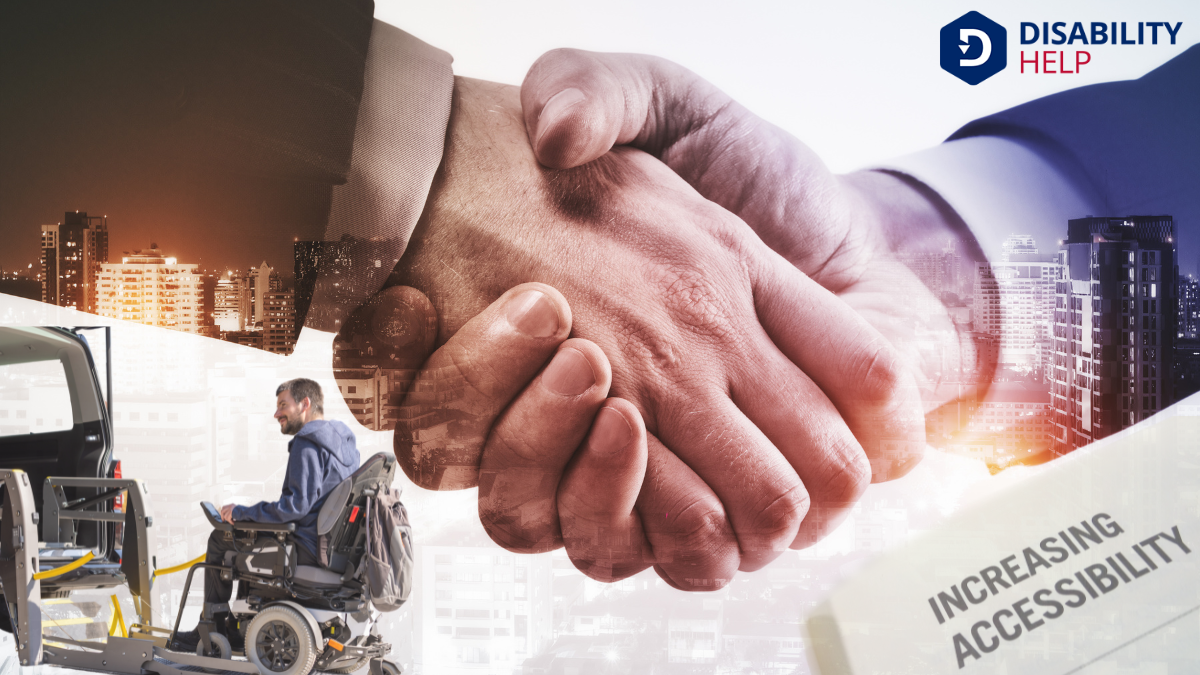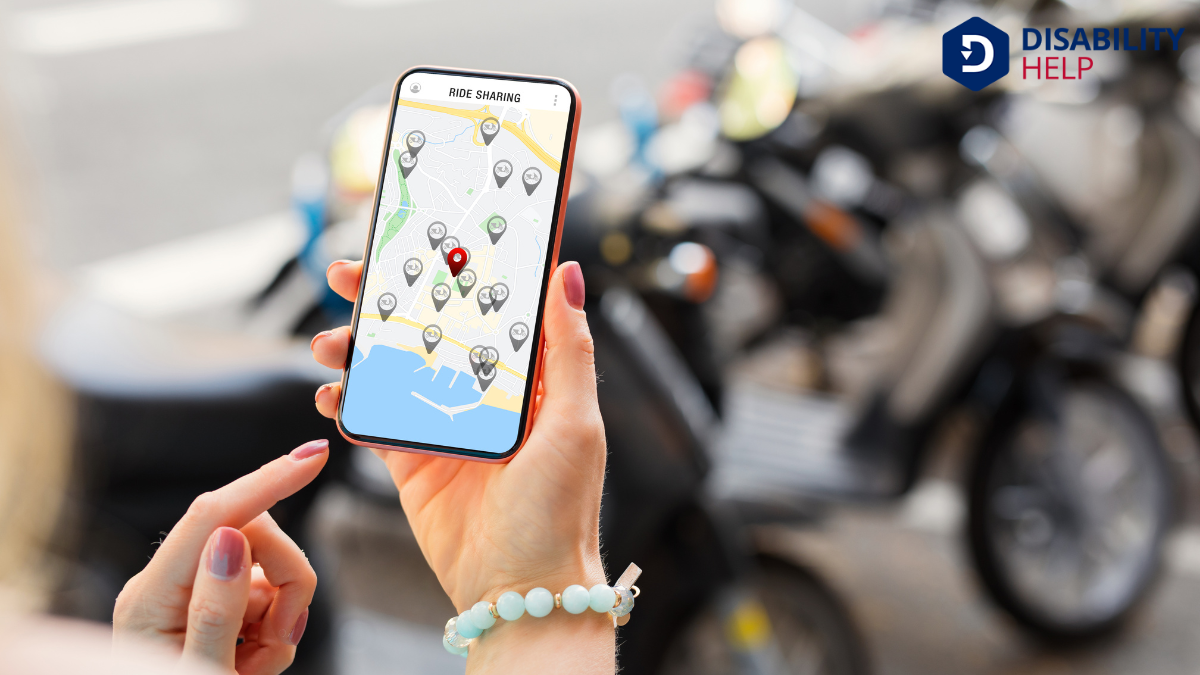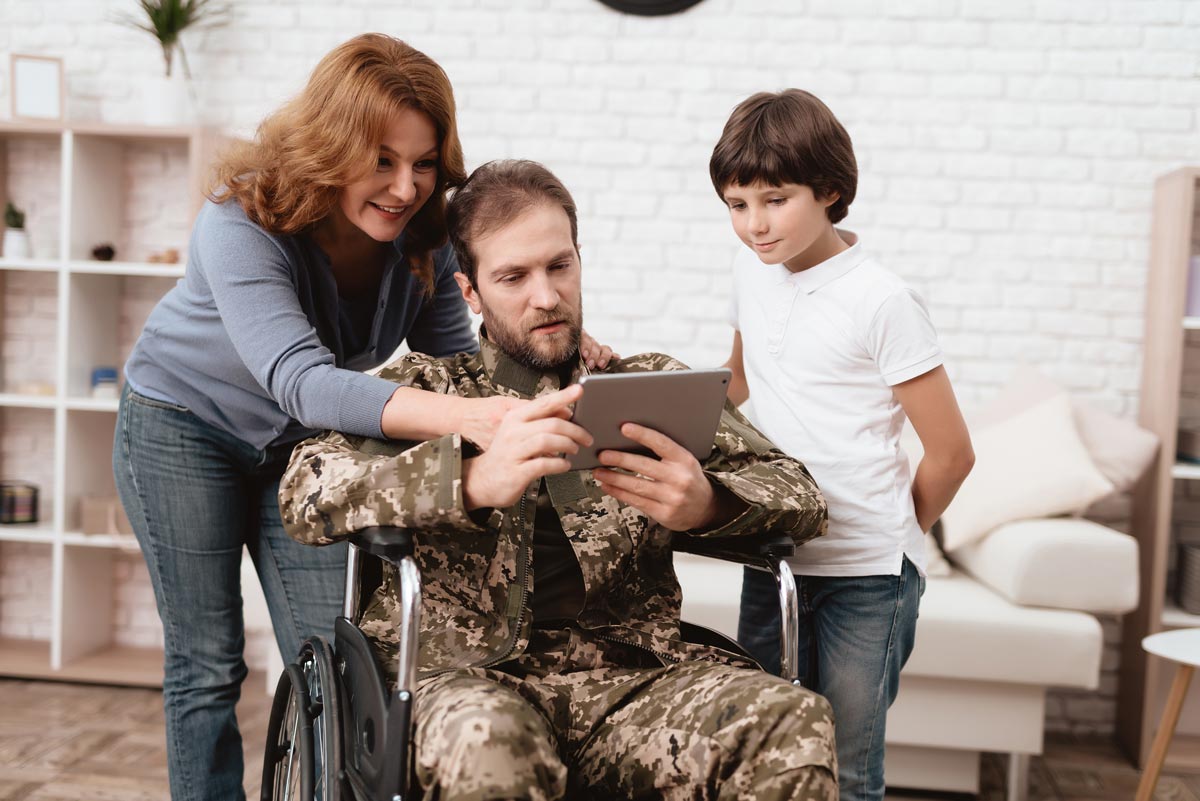We're often asked if Lyft provides discounts or special services for disabled passengers, and it's an important topic to explore. Lyft's commitment to accessibilityThe design of products, devices, services, or environments to be usable by people with disabilities.... includes several initiatives aimed at easing the journey for disabled riders, whether it's through discount programs or enhanced app features, Lyft endeavors to make ride-sharing more inclusive. But how do these services really stack up? Let's uncover what Lyft offers and how it impacts the daily lives of its users.
Key Takeaways
- Lyft offers discount programs and partnerships with local transit agencies to provide reduced fares for disabled passengers.
- Special services include Lyft Access, which provides wheelchair-accessible vehicles (WAVs) for disabled riders.
- The Lyft app allows riders to select vehicle types and add notes for additional assistance.
- Lyft partners with disability rightsThe legal and human rights afforded to individuals with disabilities, often the focus of advocacy an... organizations to offer promo codes and improve service inclusivity.
- Continuous efforts are made by Lyft to enhance app features and expand discount programs for affordability.
Understanding Lyft's Commitment to Accessibility
When it comes to providing accessible transportation, Lyft's commitment stands out as a key component of its service model. We recognize how important it is for everyone, regardless of ability, to have reliable and safe travel options.
Lyft's focus on accessibility starts with their app, which offers features that cater to users with different needs. For instance, the app's design incorporates voice-over capabilities, making it easier for visually impaired riders to book rides.
We see Lyft's dedication in their continuous efforts to improve the inclusivity of their service. They offer wheelchair-accessible vehicles (WAVs) in many areas, ensuring that mobility challenges don't hinder travel.
Lyft partners with local transportation services to provide WAVs, showing us their proactive approach in addressing accessibility challenges.
Exploring Lyft's Discount Programs for Disabled Riders

Although accessibility is a cornerstone of Lyft's mission, they also understand the importance of affordability for disabled passengers. Lyft offers several discount programs aimed at easing the financial burden for those of us with disabilities.
One program is the partnership with local transit agencies, which might provide reduced fares for eligible riders. Additionally, Lyft has been known to collaborate with organizations focused on disability rights to offer promo codes or special discounts.
To guarantee we benefit from these programs, it's vital to stay informed about local initiatives and partnerships. Checking Lyft's website or contacting customer support can provide clarity on current discounts.
How to Request a Ride With Lyft for Disabled Passengers
Requesting a ride with Lyft as a disabled passenger is straightforward, thanks to the app's user-friendly features.
We begin by opening the Lyft app on our smartphone. The process is almost identical to booking a standard ride, but with a few helpful options tailored for accessibility.
Here's how we do it:
- Enter Pickup and Destination: Input our starting point and destination like any other ride request.
- Select Vehicle Type: Choose a vehicle option, such as Lyft Access, if available, designed to accommodate wheelchairs or other mobility aidsDevices designed to help individuals move around more easily, such as canes, walkers, or wheelchairs....
- Add Notes for the Driver: In the app's notes section, specify any additional assistance needed during pickup or drop-off.
The Role of Lyft's Accessibility Features in Ride-Sharing
While ride-sharing has revolutionized how we travel, Lyft's accessibility features guarantee that everyone, regardless of mobility challenges, can enjoy the convenience it brings.
Lyft's app includes options to request a ride with accessibility in mind, ensuring easy navigation for those with disabilities. Users can select vehicles equipped to accommodate wheelchairs or other mobility aids, making travel more inclusive.
We appreciate that Lyft offers features like in-app text-to-speech capabilities, which are essential for visually impaired passengers. These efforts highlight Lyft's commitment to inclusivity, allowing us to travel confidently.
Additionally, Lyft's driver training programs aim to educate drivers on assisting passengers with disabilities, ensuring a smoother experience for everyone. Through these initiatives, Lyft is setting a standard in accessible ride-sharing services.
Analyzing the Impact of Lyft's Partnership With Local Accessibility Organizations

Let's explore how Lyft's partnership with local accessibility organizations is creating positive outcomes for disabled passengers.
By working closely with these groups, Lyft enhances its efforts to make transportation more accessible and inclusive.
Together, we can examine the benefits of these collaborations and their impact on the community.
Local Partnerships' Positive Outcomes
Although many companies claim to prioritize accessibility, Lyft's partnership with local accessibility organizations truly demonstrates its commitment to inclusivity.
By working closely with these groups, Lyft not only supports the community but also enhances our understanding of the unique needs of disabled passengers. This collaboration yields several positive outcomes that benefit everyone involved.
- Enhanced Service Design: Our partners help us create more accessible and user-friendly services tailored to specific local needs.
- Increased Awareness: These partnerships raise awareness within our company and the broader community about accessibility issues, fostering a more inclusive environment.
- EmpowermentThe process of gaining control, authority, and power over one’s life, often used in the context of...: By supporting local organizations, we empower them to expand their reach and resources, ultimately benefiting more individuals in need.
Together, we're building a more inclusive transportation network.
Enhancing Accessibility Collaboration Efforts
Through our ongoing collaborations with local accessibility organizations, we're witnessing a profound impact on how we address the needs of disabled passengers.
These partnerships enable us to better understand the challenges faced by the disabled community and develop tailored solutions that enhance their travel experience. By engaging directly with experts and advocates, we guarantee our services align with real-world requirements.
We've implemented driver training programs focused on disability awareness and accessibility.
Additionally, feedback from our partners helps us refine app features, making them more user-friendly for everyone.
Together, we're fostering a more inclusive transportation network.
It's not just about offering discounts; it's about creating a reliable service that truly meets the diverse needs of our passengers, ensuring they travel with dignity and ease.
Comparing Lyft's Accessibility Services With Other Ride-Sharing Companies
When we explore the accessibility services offered by Lyft alongside other ride-sharing companies, it becomes evident that each platform has its unique approach to catering to disabled passengers.
Lyft emphasizes partnerships with local organizations to enhance its services, while Uber focuses on integrating technology with options like Uber Assist and Uber WAV.
Meanwhile, Via offers a slightly different model with its shared-ride service that aims to provide an economical option for all riders, including those with disabilities.
Here are some key features:
- Lyft: Collaborates with local transit agencies to offer more accessible rides.
- Uber: Provides Uber Assist, designed for passengers needing extra assistance.
- Via: Promotes an affordable, shared-ride model that includes accessible vehicle options.
Each company endeavors to improve accessibility, though their methods vary.
Insights Into Lyft's Wheelchair Accessible Vehicle Options
Let's explore how Lyft guarantees accessibility with their Wheelchair Accessible Vehicle (WAV) options.
We'll look at how available these rides are, how simple the booking process is, and what training standards drivers must meet.
Understanding these aspects will help us appreciate how Lyft supports passengers with disabilities.
Availability of Accessible Rides
Although many rideshare services have faced challenges in providing accessible transportation, Lyft is making strides to improve the availability of accessible rides for passengers with disabilities.
By focusing on expanding their Wheelchair Accessible Vehicle (WAV) options, they aim to offer more reliable services.
We've noticed several key aspects of Lyft's approach:
- Partnerships: Lyft collaborates with local transit agencies and organizations to increase WAV availability, ensuring more options for those in need.
- Specialized Vehicles: They're committed to incorporating more vehicles that are specifically designed to accommodate wheelchairs.
- Driver Training: Lyft emphasizes training drivers to assist passengers with disabilities effectively, ensuring a smoother ride experience.
These efforts reflect Lyft's commitment to enhancing mobility for all passengers, making it easier for everyone to access transportation.
Booking Process Simplicity
Building on Lyft's efforts to enhance accessibility, let's explore how they've simplified the booking process for Wheelchair Accessible Vehicles (WAVs).
Using the Lyft app, we can easily request a WAV by selecting the "Access" mode. This feature guarantees that riders needing a wheelchair-accessible ride find one without hassle. The app's interface guides us through the steps, requiring only a few taps to secure a ride.
Knowing the importance of timely service, Lyft works to connect us quickly with drivers who've WAV-equipped vehicles. Additionally, the app provides real-time updates on our ride's status, making sure we're informed every step of the way.
This streamlined process makes it easier for everyone to access reliable, accessible transportation when needed.
Driver Training Standards
While guaranteeing accessibility is vital, so is the quality of service provided, and Lyft's commitment to driver training standards underscores this.
We understand that having well-trained drivers is essential for a reliable and supportive experience, especially for disabled passengers. Lyft guarantees that drivers understand and cater to the unique needs of these riders.
Let's look at how Lyft maintains these standards:
- Comprehensive Education: Lyft provides training on how to assist passengers with disabilities, including safe vehicle operation and efficient use of adaptive equipmentDevices that assist individuals with disabilities in performing ADLs, such as grab bars or shower ch....
- Sensitivity Training: Drivers learn how to communicate respectfully and effectively with passengers of all abilities.
- Regular Updates: Lyft periodically updates training to reflect the latest guidelines and technologies in accessible transport.
These standards help us trust that Lyft prioritizes both safety and respect.
Navigating the Lyft App: Tips for Disabled Riders

Maneuvering the Lyft app can be a smoother experience for many disabled riders with a few handy tips.
First, let's guarantee our profile settings include any necessary accessibility preferences. This helps in matching us with drivers who can accommodate our needs.
Next, utilizing the "Notes for driver" section to communicate specific requirements or assistance we might need is vital.
It's also beneficial to familiarize ourselves with the app's features like scheduling rides in advance, which can provide peace of mind.
Don't forget to explore the app's accessibility options, such as voiceover support, to enhance navigation.
Finally, if we encounter any issues, reaching out to Lyft's customer support directly through the app can offer timely assistance and resolution.
Feedback From Disabled Passengers on Lyft's Services
Let's explore what disabled passengers are saying about Lyft's services.
Many appreciate the positive experiences with drivers, who often go above and beyond to assist.
However, there's still a need for accessibility improvements to make the service truly inclusive for everyone.
Accessibility Improvements Needed
Despite Lyft's efforts to provide discounts for disabled passengers, many of us have encountered challenges that highlight the need for significant accessibility improvements.
We recognize that Lyft wants to make rides smoother for everyone, but there are specific areas that still require attention.
1. Vehicle Accessibility: Many of us find it difficult to book accessible vehicles that accommodate wheelchairs or mobility aids.
More options would make a huge difference.
2. App Usability: Maneuvering the app can be challenging for those with visual impairments.
Improving screen readerSoftware that reads aloud the text on a computer screen, used by individuals who are blind or visual... compatibility would enhance our experience.
3. Driver Training: Drivers often lack training on assisting disabled passengers.
Better education would guarantee a more respectful and inclusive service.
Let's hope Lyft addresses these issues for a better experience for all.
Positive Driver Experiences
Many of us have experienced heartwarming moments with Lyft drivers who go above and beyond to make our journeys comfortable and enjoyable.
These drivers often show genuine kindness and understanding toward our unique needs. We've heard stories where drivers patiently assist with wheelchairs, or offer a steady arm for support. They listen to our preferences, ensuring the car temperature and music volume suit us perfectly.
One passenger shared how a driver took an unexpected detour to avoid bumpy roads, prioritizing safety and comfort.
Another expressed gratitude for a driver who waited patiently during a medical appointment without any hint of frustration.
These positive experiences remind us that empathyThe ability to understand and share the feelings of another, particularly important in understanding... and consideration can transform a simple ride into a memorable journey.
Future Developments in Lyft's Accessibility and Discount Programs
As Lyft continues to innovate and expand its services, we're excited to share plans for enhancing accessibility and discount programs for our disabled passengers.
Our commitment remains steadfast in ensuring everyone has access to convenient and affordable transportation options. Here's what we're planning:
- Enhanced App Features: We're developing app updates for a more user-friendly experience, including improved navigation and voice commands for ease of use.
- Expanded Discount Programs: We'll introduce more tailored discounts to make rides more affordable for disabled passengers, ensuring accessibility doesn't come at a premium.
- Improved Vehicle Accessibility: We're investing in a broader fleet of wheelchair-accessible vehicles and enhancing driver training to better serve diverse mobility needs.
Together, these initiatives will help us create a more inclusive and accommodating transportation solution.
Conclusion
To sum up, we've explored how Lyft is committed to making transportation more accessible and affordable for disabled passengers. By offering discount programs, partnering with local organizations, and providing a user-friendly app with features like WAV requests, Lyft is enhancing the ride-sharing experience for all. As we look ahead, we're excited to see how Lyft continues to innovate and expand its accessibility initiatives, ensuring every rider feels valued and supported on their journey.






